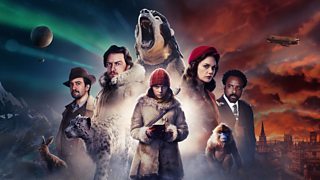- Try
- Rate
- Share
How did you rate this?

The Inside Story
We spoke to Gudren Claire, Head of Production at Parable, about this VR project.
Can you sum up Ambulance VR in a sentence?
Ambulance VR is a six-minute 360 documentary, which immerses you in the world of the paramedics of the West Midlands Ambulance Service – you’ll travel at high speed in the front seat of an ambulance and join the paramedics as they treat people in their homes.
How did you approach the creative process?
We wanted to create an immersive, original piece of content to go out alongside 大象传媒 One’s series Ambulance. We talked to the production company, Dragonfly, who make Ambulance and to West Midlands Ambulance Service, who feature in the TV series and both were supportive of the idea of making a 360 film. We were very keen to try and capture strong observational footage and to see what it was like to immerse the viewer in the midst of it. We originally planned to film in 360 and then animate the footage – but once we looked at a cut of the footage in 360 video, we decided that it was more compelling to be in the ‘real’ world in video. We wanted to enhance the 360 video and give it more energy and style by using graphics and interesting transitions, so we worked with animator Lee Ellis and designer, Matthew Rudd, to add 3D text and transitions (with an emergency services aesthetic).
How is this different to what you normally do?
We come from television documentary backgrounds, so we have a lot of experience of working on access-based films and capturing actuality in unpredictable and sensitive environments. This was the first time we’d attempted to do so in 360 though and requires different ways of thinking, planning, filming and editing. Making sure the director wasn’t in the footage was one challenge, shooting in low light was another and making sure the viewer doesn’t end up feeling nauseous when travelling at high speed in an ambulance was a third.
How was it made?
It was shot on multiple Samsung cameras – which are good because they are small, unobtrusive and very mobile, with the downside being that they aren’t the best in low light. We recced the ambulance and met crew in advance and worked with Producer/Director, Dan Nightingale, who worked on the Ambulance series and not only knew the crews, but was also very familiar with shooting actuality in the ambulance environment. We shot for 4 days, because we knew that consent for filming was likely to be an issue and we would need a decent volume of call outs to follow to stand a chance of being able to film and then also getting consent to include the stories. Some days were very quiet and others were busy. We were lucky to be able to film and get consent for the two stories we’ve included, as we could have filmed for twice as long and got nothing. We then edited on Adobe Premiere and director/editor Jonathan Rudd worked closely with animator Lee Ellis and designer Mathew Rudd, to create the look and feel of the transitions and graphic effects. Finally, audio genius Chris Timpson of Aurelia Sound worked on the 360 sound mix to create a version with full ambisonic sound.
What is the potential for storytelling in 360?
Taking the viewer into the midst of real world actuality in 360 and telling a story feels hugely exciting. It reminds us a bit of the power of rig camera technology, which has been such an important part of documentary making in television in the last 5 years (e.g C4’s 24 Hours in A&E and One Born Every Minute).
What would you change if you were to do it again?
360 camera options are changing the whole time and we’d probably look at camera options again to see what the best solution would be for filming content like this. We’d like to see what it feels like to be in the midst of very dramatic scenarios and the only way to achieve that (beyond chance) would be to find a way to have more coverage and more time to film, which we’d definitely look at.



